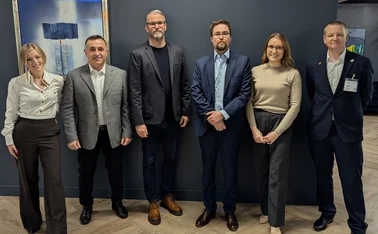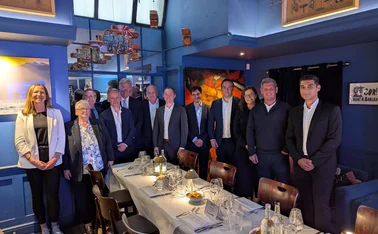
Spotlight: Technology – Working with human experts to empower D&I in insurance

Improving diversity and inclusion is a key objective across the insurance industry with initiatives such as the Women in Finance Charter, the Gender Inclusion Network and the Race at Work Charter helping to drive equality for employees and customers. Education and awareness are key to pushing this agenda, but technology has an important part to play too
There are plenty of reasons why diversity and inclusion has gained such traction in the insurance industry. “The more inclusive you are as a business, the more people feel they can bring their whole self to work,” says Vicki Leech, senior manager, customer experience at Covéa Insurance. “This leads to happier, more productive employees.”
By building a diverse workforce that more accurately reflects the insurer’s customer base, it becomes easier to create products and services that meet their needs. As well as driving loyalty and customer satisfaction, this has benefits for the bottom line. “A more diverse employee base can better serve a more diverse customer base,” says Marcelle Foxcroft, head of talent acquisition at Axa UK. “According to a report by McKinsey, companies in the top quartile for racial/ethnic diversity and gender diversity are 35% and 15%, respectively, more likely to have above average financial returns.”
Enhancing through technology
Having a diverse workforce can create better alignment with customers, but technology can also help an insurer enhance the service and products they
offer. “Technology enables insurers to create a diverse set of products that meet customer’ needs,” says Scott Field, senior director of product marketing and strategy. “It’s an enabler.”
Dave Gill, head of operations at Allianz, agrees. “Technology enables choice,” he says. “However a customer wants to engage with a business, whether that’s webchat, email or phone call, there should be an option they’re comfortable to use.”
As well as improving accessibility, he also says it can help insurers react to feedback and make changes quickly. “An insurer can adapt a call script, the number of clicks to visit a particular page or how things are communicated to suit a particular customer,” he adds. “It’s much more responsive.”
Technology also makes it easier to adapt services for customers with diverse abilities. For instance, as part of its digital accessibility agenda, which aims to bring vulnerable and disabled customers to the forefront of its brand values, LV introduced a voice skill for customers with Amazon, Alexa or Google Home Assistant products. “This is aimed at helping those less able to use a computer or telephone to check their documents,” explains Rodney
Assock, culture and CSR director at LV General Insurance. “We were the first insurer to launch such a service and so far more than 6,000 people have enabled it and it’s currently running at over 11 conversations a day.”
Covéa Insurance is also busy exploring how technology can break down barriers with customers. It launched Sign Live last year, a service that connects a customer with a signer if they are hard of hearing. “Eighty customers have used it in the first six months. It’s not a huge take-up but it’s really positive that they’ve had this support as they may have struggled before,” says Leech. “We also offer a translation service for people for whom English isn’t their first language. You have to think outside the box and offer a variety of channels.”
Supporting vulnerable customers
Technology can also help insurers to identify vulnerable customers. While it may be obvious in some cases, some customers will mask the difficulties they’re experiencing or may be unaware that additional support is available.
“It’s important to identify vulnerable customers and assist them,” says James Nicholson, head of commercial and expert claims at Zurich Insurance. “Artificial intelligence can be used to monitor calls and pick out red flag words that may indicate someone is a vulnerable customer, enabling us to provide additional support.”
He says that another key part of this is ensuring that claims are settled as quickly as possible, with technology supporting this. “We don’t want to leave any customer in a difficult situation for longer than need be so we’re working with an AI firm to identify claims that can flow straight through and those that require attention.”
Although technology can help to improve the service provided to vulnerable customers, the human touch is essential too. Leech says insurers need to empower employees to make the right decision for their customers. “It can become a bit ‘computer says no’,” she explains. “By giving employees guidelines and referral points an insurer can empower them to be more flexible. Having this understanding can make a big difference when supporting vulnerable customers.”
Attracting diverse talent
With a diverse workforce so important when it comes to creating these connections with customers, insurers are keen to find ways to extend their recruitment range. For many, this has involved an overhaul of some of their existing practices. “Insurers need to look at barriers to success,” says Julie Harrison, chief HR officer at Allianz. “This might include flexible working, different personal development routes, unconscious bias in recruitment and even the choice of language in job adverts.”
Some insurers have also turned to technology to drive more diversity in recruitment. As an example, at Axa, Foxcroft is using a digital talent assessment tool to hire new recruits in some of the high-volume roles. “This combines psychometric methodology with machine-learning and game technology to create a powerful solution that goes hand-in-hand with human intuition during recruitment,” she says. “It works well and has led to both an improved gender balance and an increased retention rate.”
Insurers must also demonstrate they have the right workplace culture, or risk losing the diverse workforce they recruited. Flexible working practices, unconscious bias training and setting up internal communities to create a safe place and allow employees to celebrate their differences can all support a diverse and inclusive workforce.
The pandemic’s role in moving the diversity discussion forward cannot be overlooked either. With employees working from home, Harrison says she’s looking at the lessons learnt and the opportunities that remote working has created. “It may also mean recruitment practices change as a result,” she says. “It’s definitely accelerated change.”
Further reading
Only users who have a paid subscription or are part of a corporate subscription are able to print or copy content.
To access these options, along with all other subscription benefits, please contact info@postonline.co.uk or view our subscription options here: https://subscriptions.postonline.co.uk/subscribe
You are currently unable to print this content. Please contact info@postonline.co.uk to find out more.
You are currently unable to copy this content. Please contact info@postonline.co.uk to find out more.
Copyright Infopro Digital Limited. All rights reserved.
As outlined in our terms and conditions, https://www.infopro-digital.com/terms-and-conditions/subscriptions/ (point 2.4), printing is limited to a single copy.
If you would like to purchase additional rights please email info@postonline.co.uk
Copyright Infopro Digital Limited. All rights reserved.
You may share this content using our article tools. As outlined in our terms and conditions, https://www.infopro-digital.com/terms-and-conditions/subscriptions/ (clause 2.4), an Authorised User may only make one copy of the materials for their own personal use. You must also comply with the restrictions in clause 2.5.
If you would like to purchase additional rights please email info@postonline.co.uk









